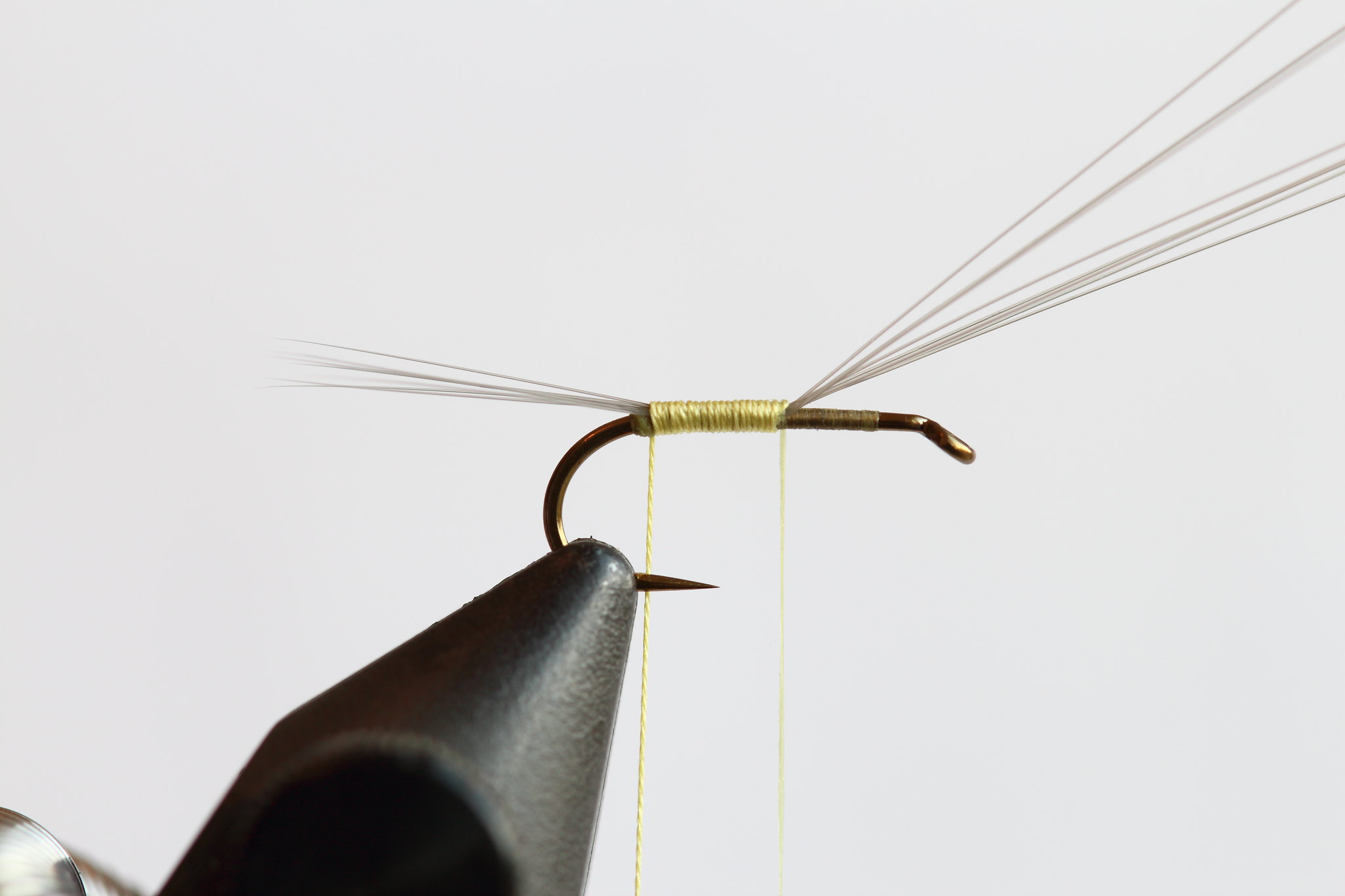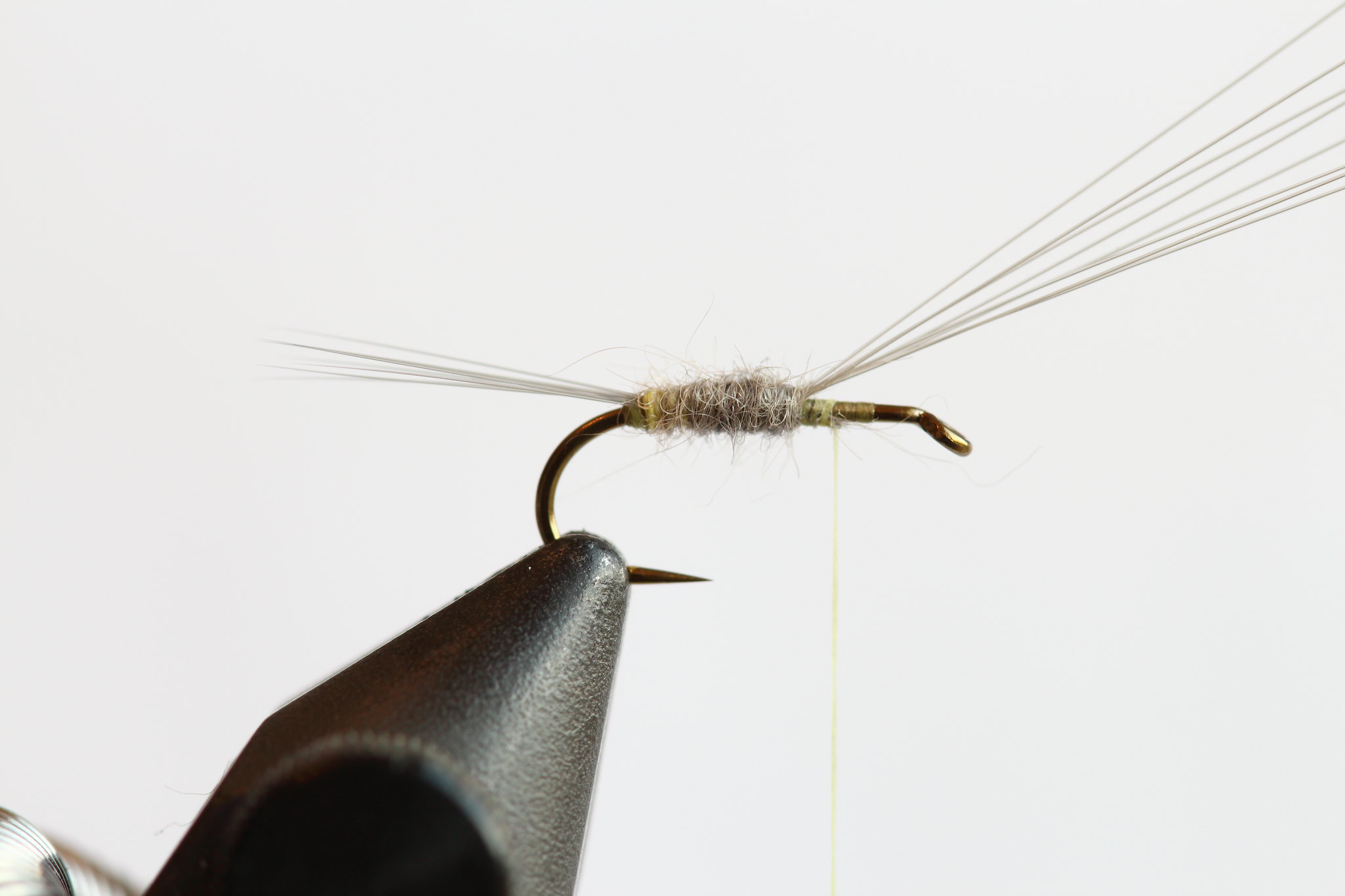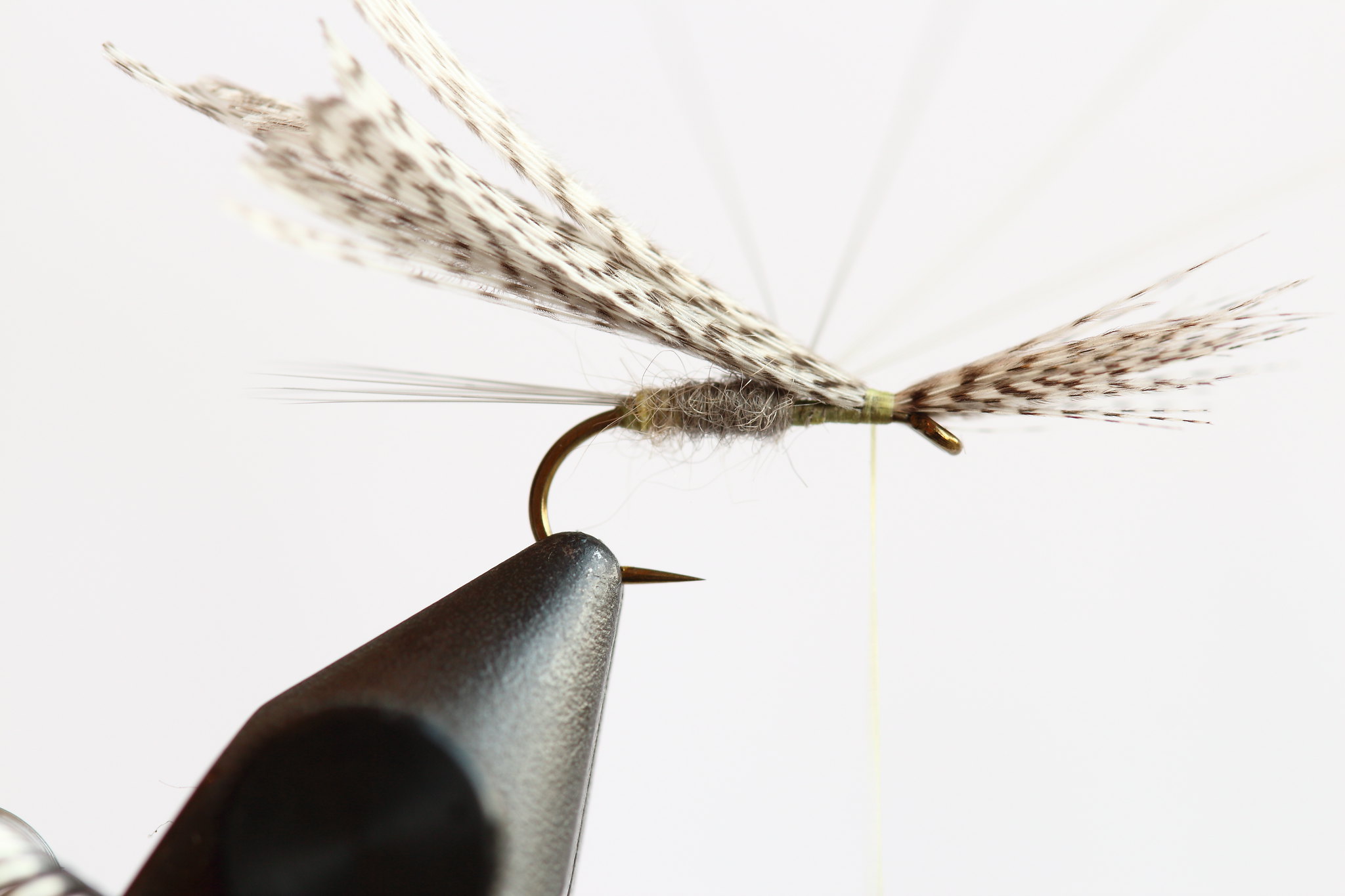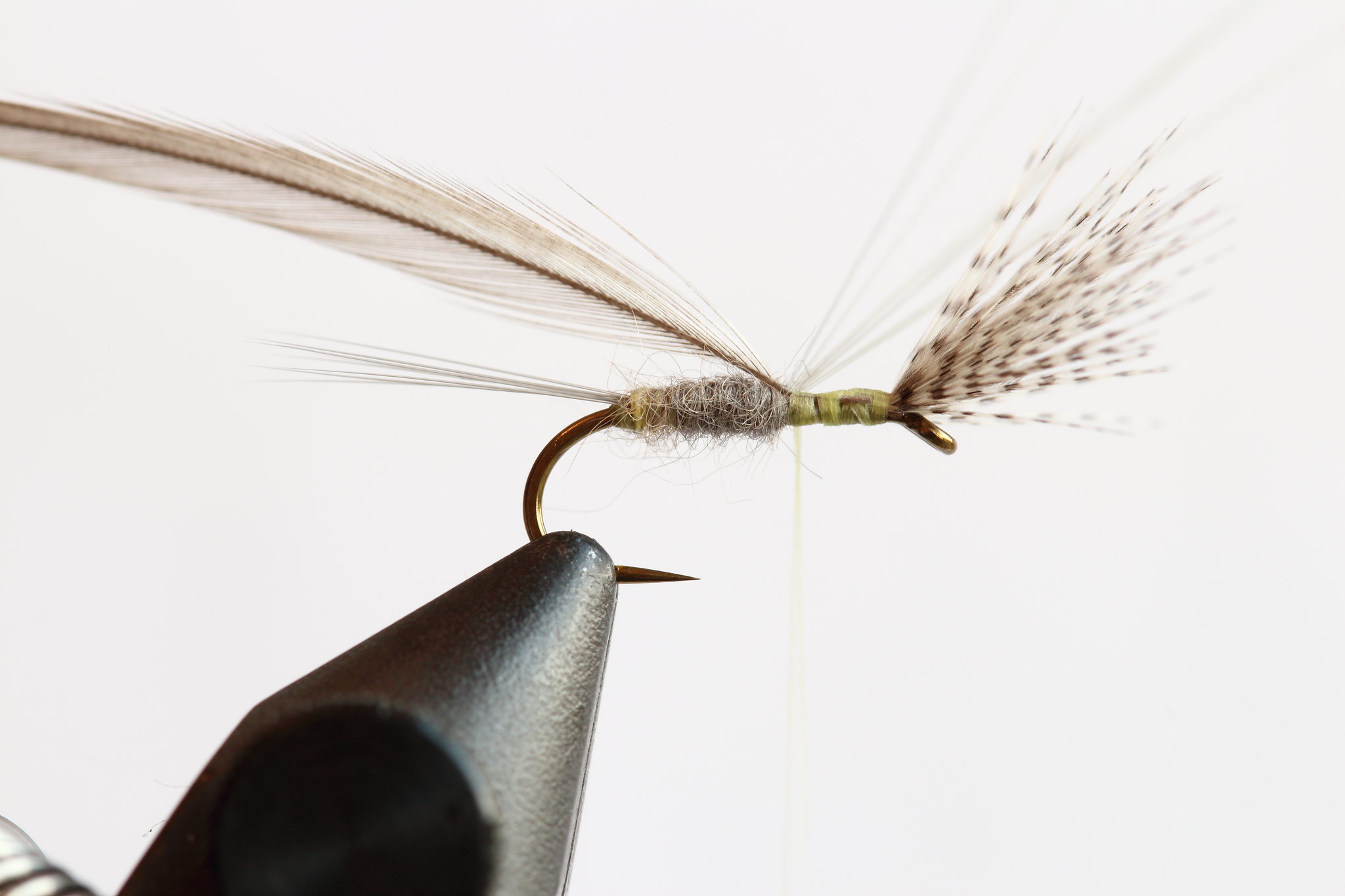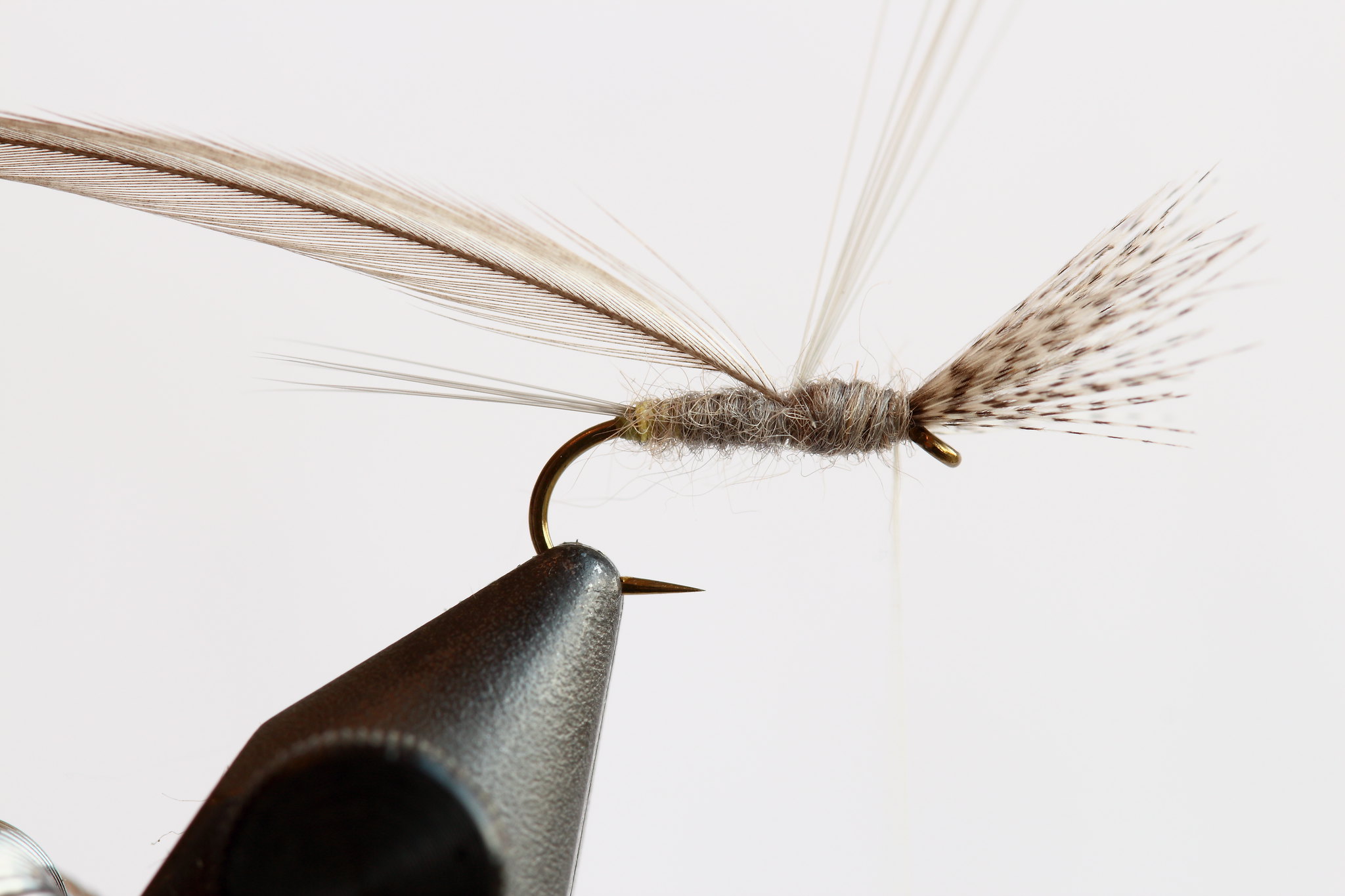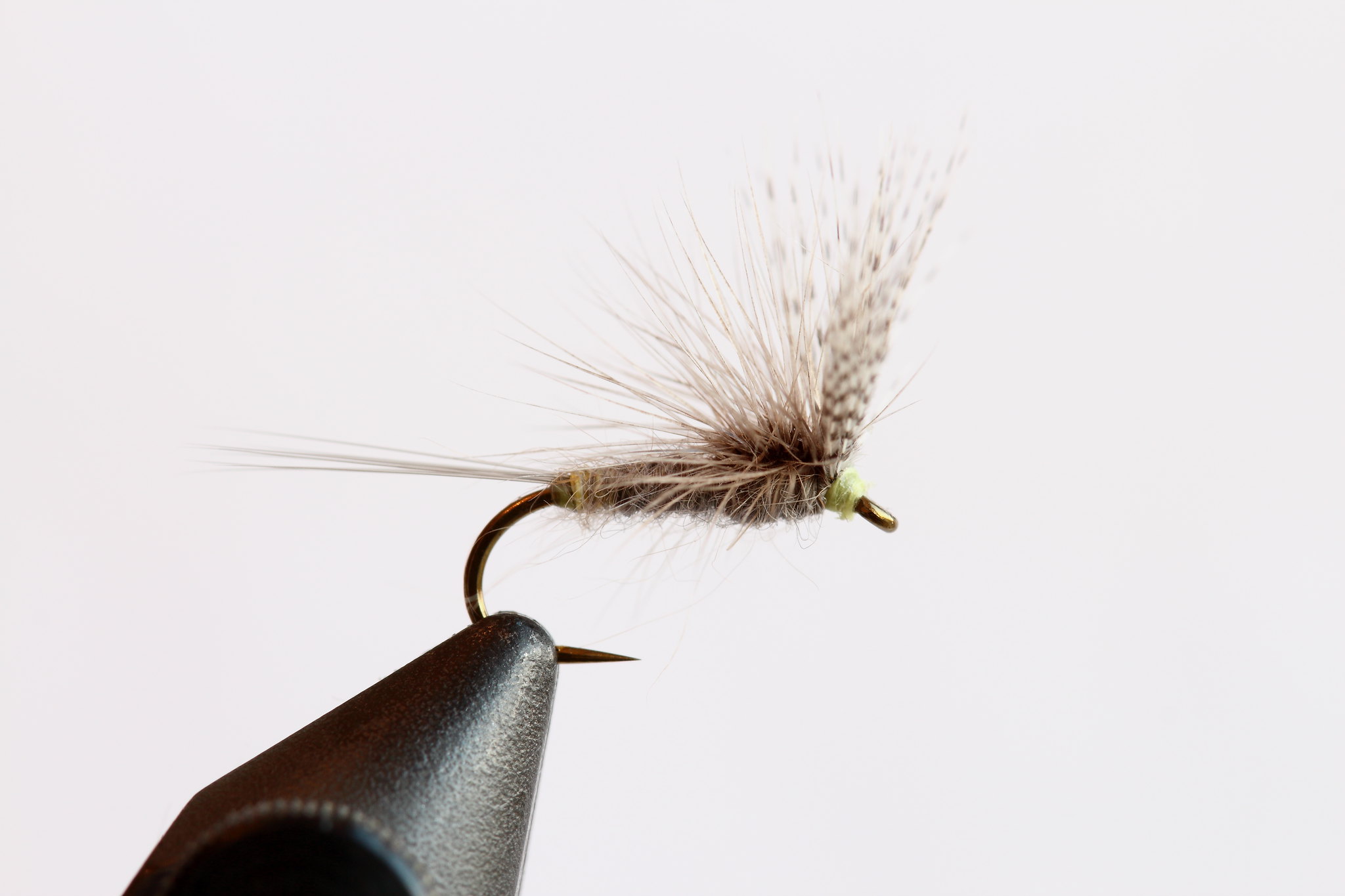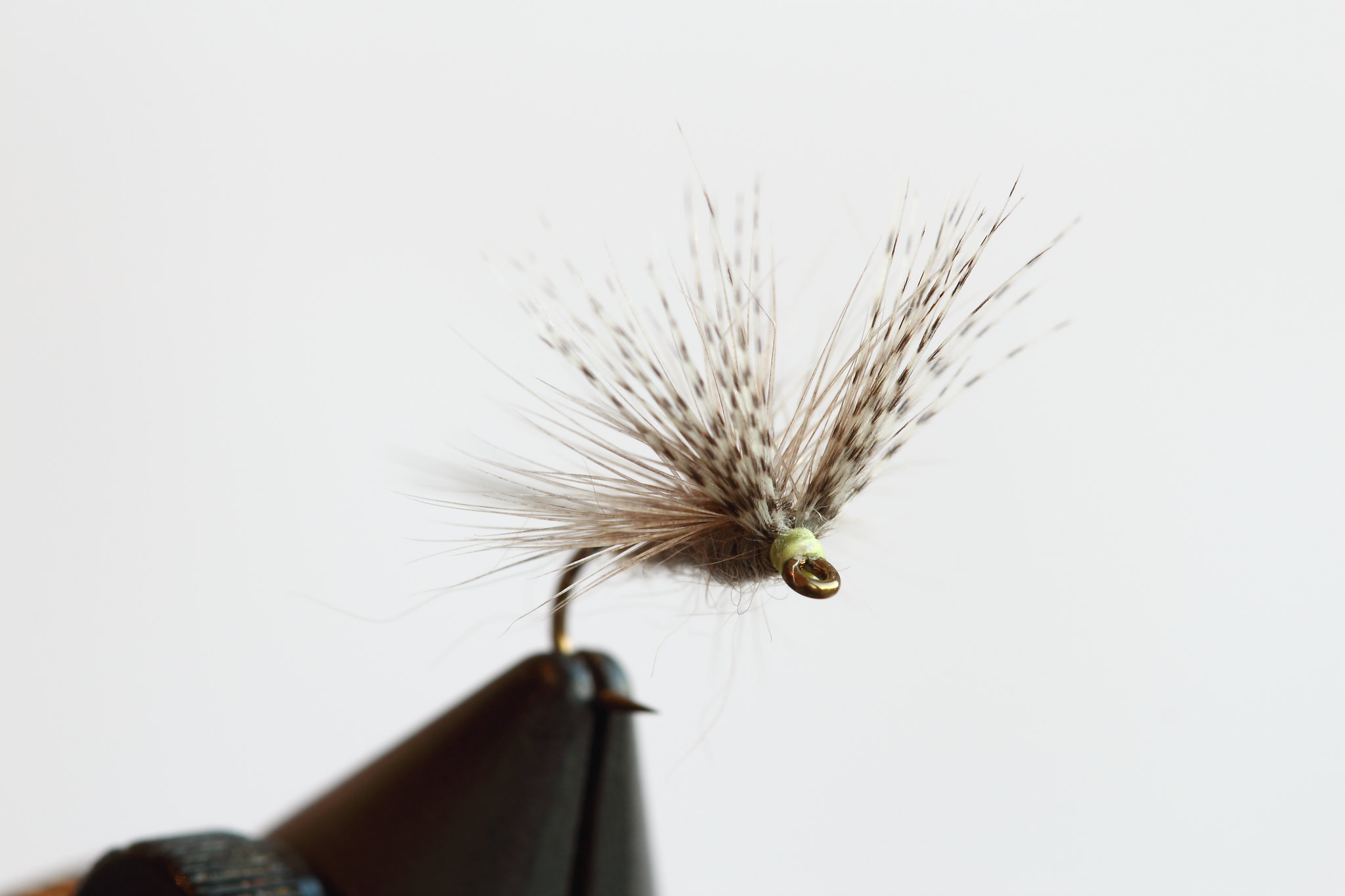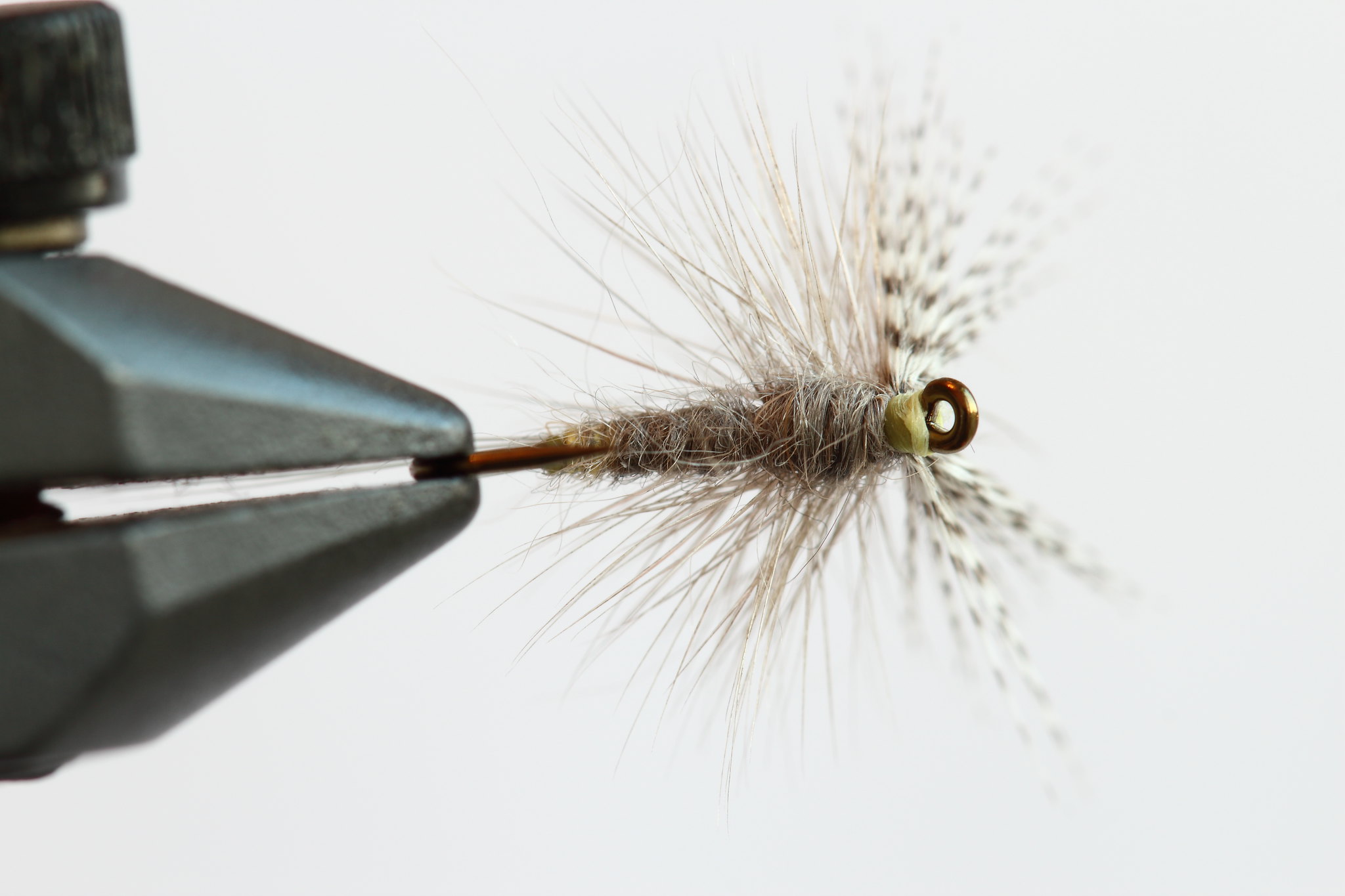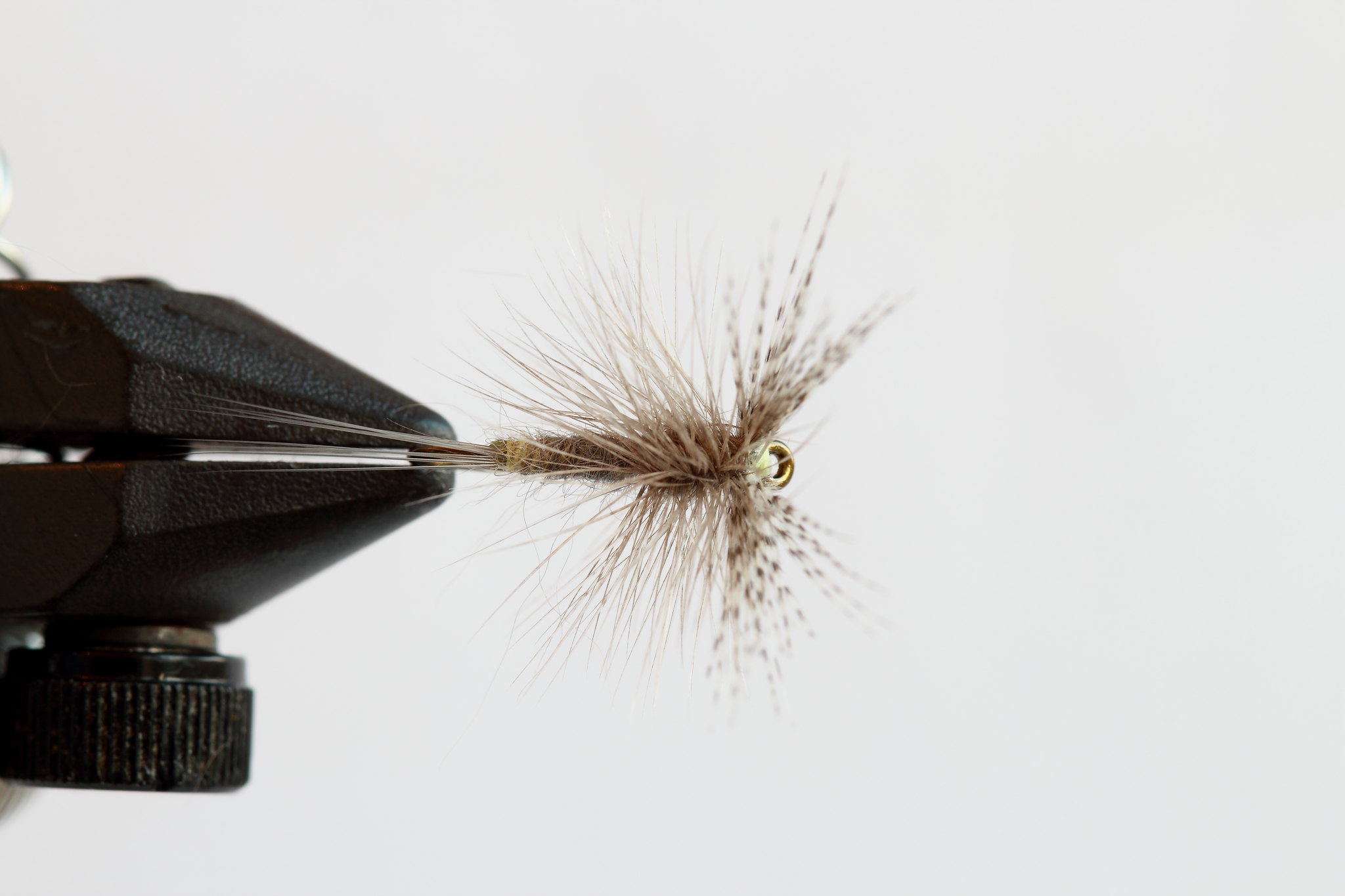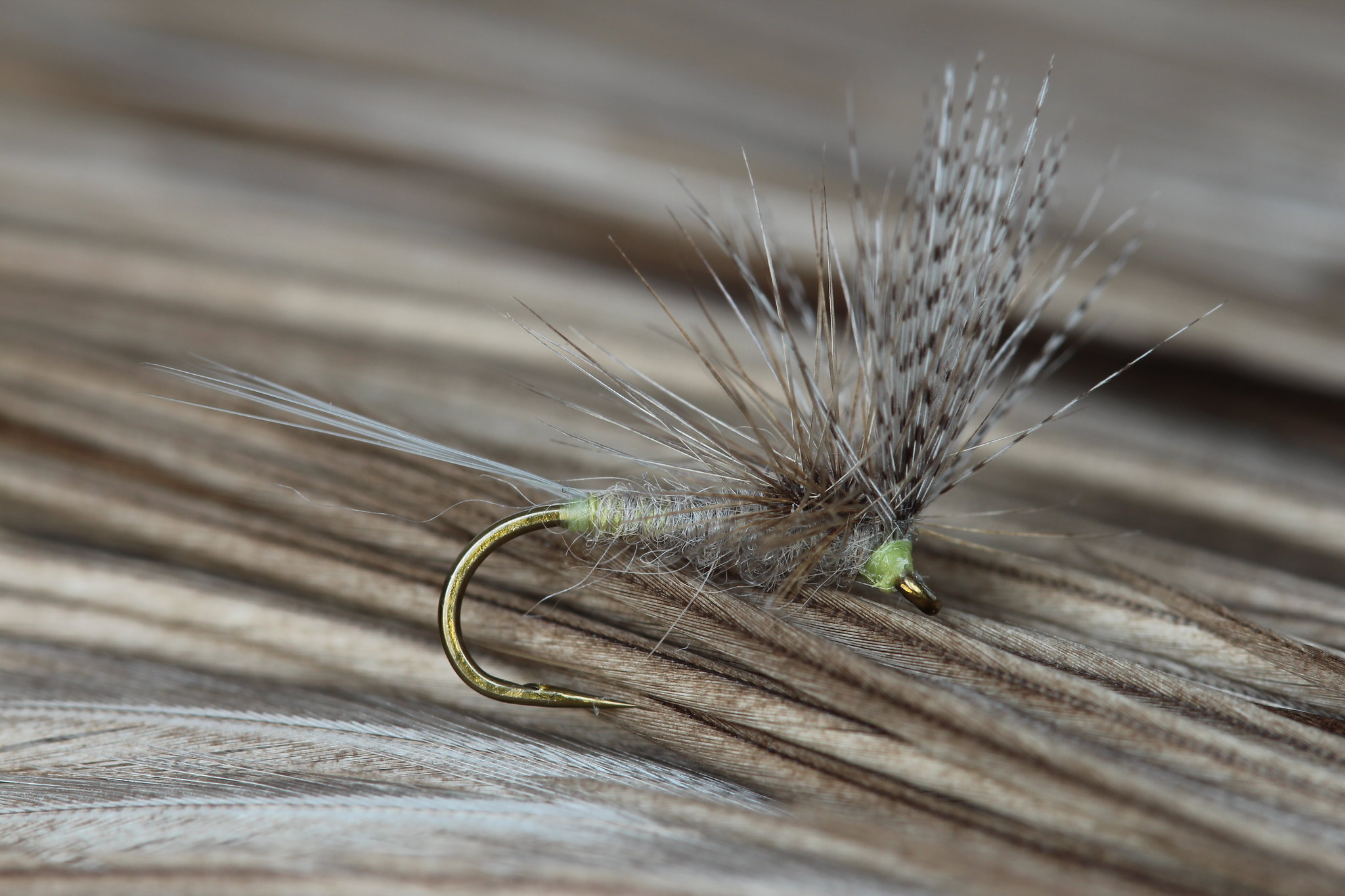The promise of a full days fishing was unfulfilled. Yet another weather front blew over the country and despite me checking the river levels, which were good, it was a little too coloured. Not wanting to waste the hours drive I forged ahead and gave it a go.
I tried an area that gave me several grayling last time but apart from one missed fish, which it suspect was a trout, I failed to catch anything. Other previously productive areas were tried without success. I'd been soaked by the rain and blown apart by the wind, I was beaten.
The hour drive home gave me time to contemplate. I had no motivation to tie flies for the remainder of the afternoon. I wasn't due to collect my daughter until four o'clock. Arriving back home at two gave me a couple of hours and given the weather I had already put up with, I felt I may as well try something else my end.
Living in the Fens I am surrounded by many drains, big and small. The stocks of predators aren't what they used to be but I knew a very small drain that I hoped would get over looked. It's a little walk just out of town and I have caught pike there before.
Armed with my spinning rod and soft rubber lures I started at the end of the drain where the pump house is. Most of he smaller land drains have pumps to take the excess water out and pump it into the main drain systems.
A little way up I had a couple of knocks, as the lure reached the bank I could see a posse of perch attacking. I was using a 13cm Savage Gear soft 4play that was much too big for these perch. A delve into lure my bag produced a much smaller 8.5cm version supplied with a SSG weighted jig head. I had around twenty minutes of fun watching the shoal of perch attacking my lure, as a bonus I even caught three of them. They were probably barely half a pound but he lighten my day up no end.
I missed a very small pike as I was toying with the perch, probably struggled to make 12" but again being able to watch the strike made up for the miss.
I reverted back to the original lure and made further progress along the drain. I caught a pike, again this was a small one, but I didn't care I was catching something. I hooked and lost another pike fished for a further twenty minutes without any more hits and that was my time up.
I can't complain, four fish in less than a couple of hours on a day I had written off.
Monday, 30 December 2013
Sunday, 22 December 2013
Adams Humpy
I have been accumulating some new products from Nature's Spirit. They have a very good range of deer, elk and moose hairs, one that has caught my attention is Humpy Deer, the one I have is dyed medium dun.
The blurb says "Long, fairly fine hair with nice tips. Just the right textures and length for tying high floating humpies. This hair also spins well for collars and heads."
The patch is dyed well and the colour even and to be honest it is what the tin says. You can find the Humpy Deer at Funky fly tying.
I am determined to catch at least one trout on a Humpy next season.
Wednesday, 18 December 2013
Last session.
I've been rather busy these last few weeks. The house purchase is rolling along smoothly, and I have been working overtime where I can fit it in, just to make things easier. I still have a pretty horrendous credit card bill to pay. My own fault really, too eager to tie some of these up and ooo, they look good I'll have to get the materials to tie them too. Ahh but what the heck, it'll all last me for years.
This morning there was no overtime available and as I didn't start work until half one this afternoon I'd have been foolish to not use the opportunity to get a few hours fishing in. And in all honesty this would probably be my last session this year.
I have been tying a few heavy bead head bugs and such for grayling and I was determined they would get a swim of some sort.
The river was painfully low and clear. I could see the fish shoaled up and they were very spooky, added to this, was the winter league coarse fishing match that takes place every Wednesday. Not much I could do but fish around them. Thankfully it turned out they had left alone many of the areas I wanted to fish.
I started in a slow pool of moderate depth, I knew it held silverfish and with some persistence, I winkled out two dace on a size 16 biot bodied bead head nymph.
Next swim was below a weir. I fished a short line with a Utah Killer bug and JP caddis pupa and after some time I caught my first and biggest grayling. The UKB proving too irresistible. No other fish came out of that pool so I moved on. Another weir only produced an OOS brown trout.
The last area I tried was another weir that is much deeper than the majority on this stretch I fish. I have had more grayling from this pool than anywhere else. I changed the JP caddis for a red tag variant bead head as it has a bigger tungsten bead, first cast at the tail provided another grayling of around eight inches. I fished on catching another two grayling of similar size and two more OOS trout one of which was a lovely fish around twelve inches.
Further down the pool from where I was fishing there were a pair of trout cleaning a size-able patch of gravel. I saw several redds throughout the morning which bodes well for the future. That future does look bleak though after having a conversation with one of the matchmen, he told me that last week a foreign national was trying to sell two carrier bags full of trout to one of the butchers in town. I only hope it wasn't true but I have no reason to disbelieve him.
This morning there was no overtime available and as I didn't start work until half one this afternoon I'd have been foolish to not use the opportunity to get a few hours fishing in. And in all honesty this would probably be my last session this year.
I have been tying a few heavy bead head bugs and such for grayling and I was determined they would get a swim of some sort.
| Sturdy's fancy bead head |
| Pink baetis nymph |
| Pink brassie |
| Utah Killer bug |
| Red tag variant bead head |
Further down the pool from where I was fishing there were a pair of trout cleaning a size-able patch of gravel. I saw several redds throughout the morning which bodes well for the future. That future does look bleak though after having a conversation with one of the matchmen, he told me that last week a foreign national was trying to sell two carrier bags full of trout to one of the butchers in town. I only hope it wasn't true but I have no reason to disbelieve him.
| Male trout lying over the redd |
Friday, 6 December 2013
This week I have mostly been tying...(part 3)
| My first OE Heptagenid nymph in four years |
I have not tied one of these nymphs in nearly four years. This along with the OE baetis nymph are staples for early season upstream nymphing. I've caught a lot of fish on this pattern; the weight helps put it in the prime area, near the bottom of the river. I guess it would catch 70% of the trout compared to the baetis. I morn the loss of Spanflex in the smaller sizes, the small and extra small made perfect legs for size 14 and 16 nymphs.
| Peter Hayes' Muskrax |
Finally I could tie the muskrax properly and promptly knocked a few up. The fly is similar to the PhD; the wing is mallard flank, it is tied forward of the hackle but still split into a V. The hackle is fully wound around the shank but the micro fibbet butts are brought underneath the thorax and split the hackle giving the impression of it being clipped. Peter's reason for this is to form a breast plate, making the bottom of thorax smooth like on dun. Another positive off shoot from this is that the fly sits up in water, the split hackle and tail keeps the abdomen off the water.
I liked the effect that the wax body provided. I decided to combine the muskrax and PhD. I used the liquid wax body and forward split wing from the muskrax, (the PhDs wing is split by the hackle, the mallard wing intermingling with the hackle fibres), with the paraloop technique from the PhD. I tied two versions but with only one difference between them; the yellow silk drawn through cobblers wax to give a darker colour. One fly being a pleasant dark olive colour the other a paler yellow olive.
As a rule I would tie the darker olive fly with a darker dun hackle and colour the wing with a grey marker. This in size 16 would be a great imitation for the large dark olive. Tie the yellow version with a lighter dun hackle and leave the wing natural, sizes 18-20 will suit the spurwings and pale wateries.
| Yellow Pearsalls silk coloured with cobblers wax |
If you feel like tying some of the liquid wax bodied flies up just be aware that it doesn't dry hard, after it has soaked in it will feel slightly tacky but it won't come off or leave a residue on your fingers. Tie the flies first then apply small amounts of the liquid wax using a dubbing needle. Don't put too much on otherwise it can soak in to the wing and hackle resulting in clogged up fibers.
| Yellow Pearsalls silk left natural with liquid wax |
I've also been tying some bead head nymphs with stripped peacock quill.
Sunday, 1 December 2013
Classic grayling flies: The dries.
Friday, 22 November 2013
PhD (Peter Hayes Dun)
Peter Hayes' PhD is pretty much my favourite olive dry fly. I came across it in FF&FT in 2005; Peter was running a series revealing the flies he had developed. The mix of muskrat underfur over yellow thread and paraloop hackle splitting a V wing is superb.
Start off by running a layer of thread to the end of the hook shank; I am using yellow Gudebrod 10/0. At the bend form a small ball of thread. I use wax to stop the thread slipping off itself. Tie a bunch of microfibbets on top of the ball (around 7-8), bed the thread down as much as you dare, this will help to splay the fibbets. Tie the ends of the fibbets down on top of the shank to a point about halfway to two thirds, the butts will form the post to wrap the hackle around. Tie in a length of yellow Pearsalls silk where the fibbets are tied down.
Wrap the silk back towards the tail.
Now dub the body with muskrat underfur, making a nice taper. the dubbing should be thin enough to allow the silk to show through near the tail.
Tie in a clump of silver mallard flank, leave a gap about a hook eyes width. The wing will be split into a V by the paraloop hackle so you can begin parting it in two half's.
Tie in the hackle - I have used medium grey dun - and dub the thorax; again muskrat is used.
Wrap the hackle up the microfibbet butts to a length that meets the eye, wrap the hackle back down a couple of turns.
Tie down the fibbet butts with firm tight wraps. Pull the butts as hard as you can, this will trap the hackle without needing to tie it in. Fold back the butts and wrap a head, this will prevent them being pulled out inadvertently. Whip finish.
A darker hackle and dyed mallard gives this PhD an overall darker appearance.
Subscribe to:
Comments (Atom)


